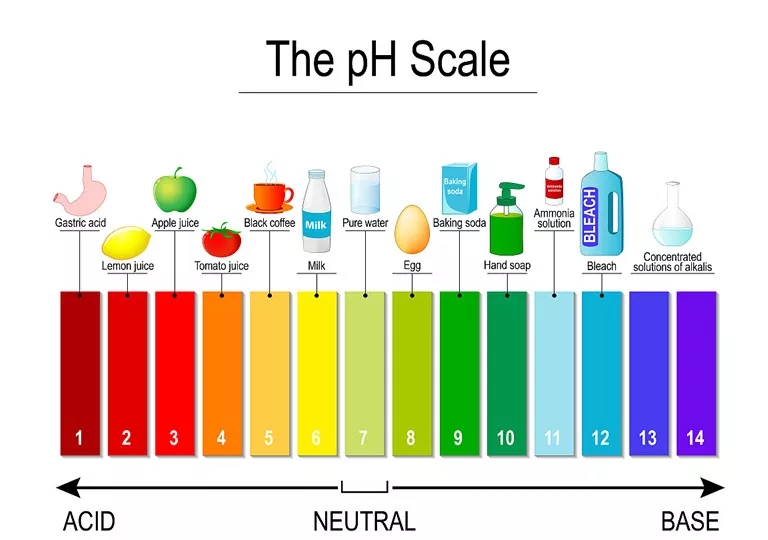The national compulsory standards GB 18401-2010 and GB 31701-2015 clearly point out that the consumption, decoration and household textile products produced and sold in my country must be measured for pH and meet the corresponding safety technical requirements.
1. What is pH?
The pH value is a measure of the acid-base strength of a solution. It is a simple way to express the concentration of hydrogen ions in the solution (pH=-lg[H+]). The value is generally between 1-14, and 7 is the neutral value. The more acidic the solution, the lower the value, and the stronger the alkalinity, the larger the value.

2, the significance of the pH test
The surface of human skin is in a weakly acidic environment, with a pH of 5.5 to 6.0. The acidic environment can inhibit the growth and reproduction of certain pathogenic bacteria, prevent the invasion of external pathogens, and protect the skin from infection. If the pH is too acid or too alkaline, the body's weakly acidic environment will be destroyed, causing skin itching or allergies.
3, the principle of textile pH testing
After the textile is extracted with distilled or deionized water, the pH value of the extract is measured using a pH meter with a glass electrode.
4, the reasons for the excessive pH of textiles
The effect of dyes in production: commonly used reactive dyes, Shihlin dyes, and sulfur dyes are all produced under alkaline conditions. Even if the cloth surface can be washed well, it will be affected by the pH of the production water.
The influence of the printing and dyeing process: After refining, dyeing, printing and other textiles such as cotton, wool, silk, polyester, nylon, and acrylic, the fabrics all have alkalis, acid chemicals and auxiliaries, and there are different pH values. After washing, soaping, acid neutralization, drying and other processes, if the amount of chemical additives is high or the post-washing treatment is insufficient, the pH value of the textile will exceed the standard and affect the wearability of the textile.
The effect of fabric: fabrics of different thicknesses affect the pH value of the fabric surface, thin fabrics are easy to wash after dyeing, and the pH value of the fabric surface is low; thick fabrics are relatively difficult to wash after dyeing, and the pH value of the fabric surface is relatively high.
The influence of laboratory personnel's operation error: different dry humidity of the tested fabric, different extraction temperature, different extraction time, etc. will affect the measurement result of the pH value of the fabric surface.
5. Measures to improve textile pH unqualified
Acid-base neutralization: neutralization by adding alkali for more acidic, neutralization by adding acid for more alkaline, generally used acid is acetic acid or citric acid, and alkali is soda ash. Improvement of dyeing and finishing process: increase water washing, etc. Choose high-quality raw materials, dyes, etc., and eliminate them from the source.
